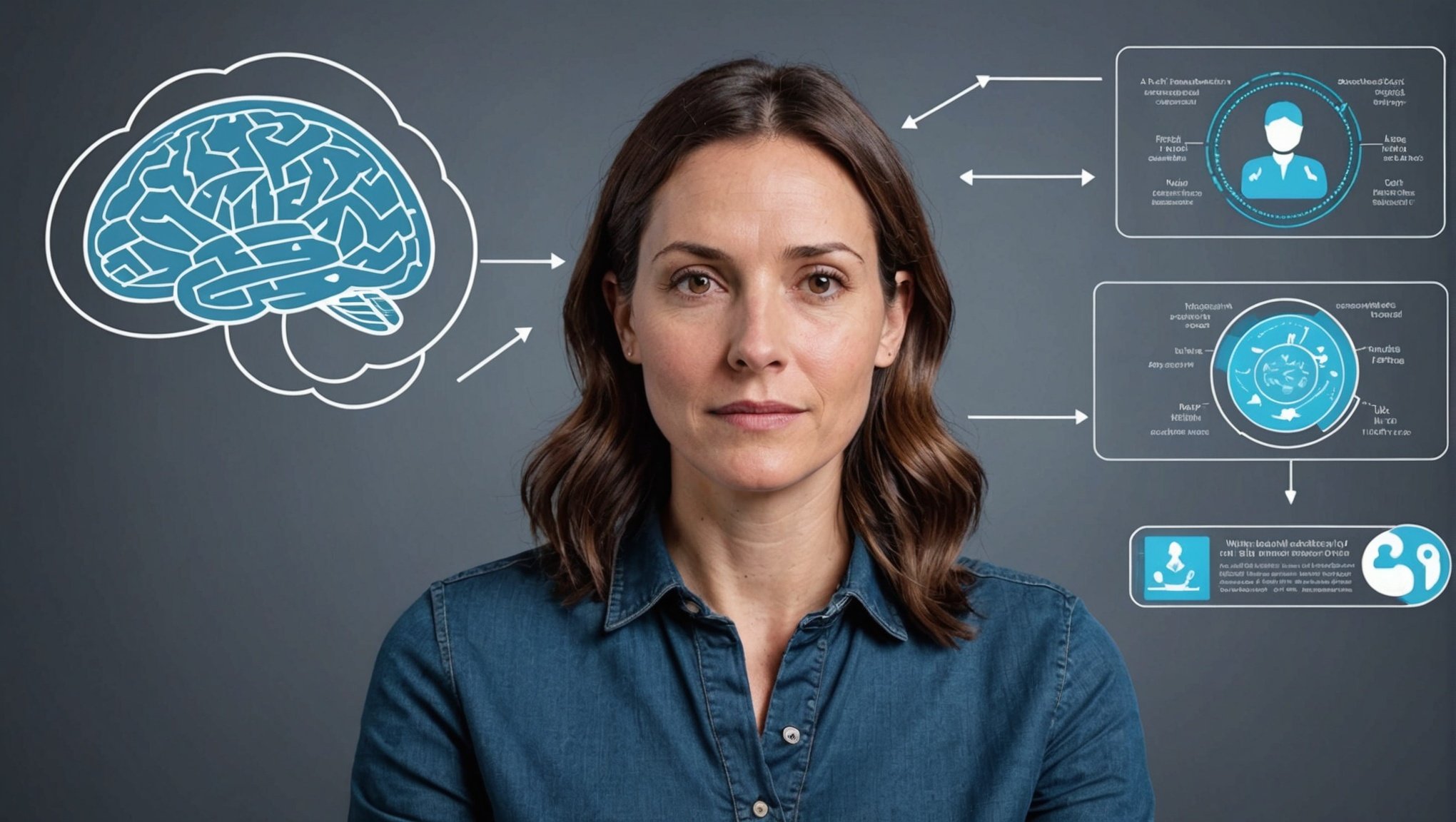In today’s world, Artificial Intelligence (AI) is revolutionizing various sectors, including mental health. AI-driven mental health assessment tools offer significant promise by providing timely and accurate assessments. However, with these advancements come pressing concerns about security and privacy. As we navigate this rapidly evolving landscape, it’s crucial to adopt robust practices to ensure these tools are safe and effective.
Understanding the Importance of Security in AI-Driven Mental Health Tools
The integration of AI in mental health services presents an unprecedented opportunity to enhance patient care. However, this innovation also brings potential risks that need to be addressed. Ensuring the security of AI-driven mental health tools is not just about protecting data; it’s about safeguarding the trust between patients and healthcare providers.
In the same genre : How can AI be used to enhance the detection of malware in cybersecurity?
AI systems handle sensitive information, making them targets for cyber-attacks. A breach not only compromises personal data but can also lead to devastating consequences for individuals relying on these tools for critical mental health assessments. Therefore, implementing comprehensive security measures is paramount to protect both the data and the integrity of the AI systems.
Implementing Robust Encryption Methods
One of the most effective ways to secure AI-driven mental health assessment tools is through robust encryption methods. Encryption ensures that data remains inaccessible to unauthorized users by converting it into a coded format that can only be deciphered with the correct key.
Additional reading : How can AI be used to enhance the accuracy of financial trading algorithms?
Types of Encryption
- Symmetric Encryption: This method uses the same key for both encryption and decryption. While it is faster, the challenge lies in securely sharing the key.
- Asymmetric Encryption: This involves two keys – a public key for encryption and a private key for decryption. It offers more security but at the cost of speed.
Best Practices
- Use Strong Encryption Algorithms: Algorithms such as AES (Advanced Encryption Standard) are recommended for their strength and efficiency.
- Regularly Update Encryption Protocols: Encryption standards evolve, and what is secure today might not be secure tomorrow. Regular updates ensure the latest security measures are in place.
- Encrypt Data Both at Rest and in Transit: Data should be encrypted not only when being stored but also during transmission to prevent interception.
By implementing these encryption practices, you can significantly reduce the risk of data breaches, thereby protecting sensitive mental health information.
Ensuring Data Anonymization and De-Identification
Data anonymization and de-identification are crucial for maintaining the privacy of individuals using AI-driven mental health tools. These processes involve modifying data so that personal identifiers are removed, making it difficult to trace the data back to any individual.
Importance of Anonymization
Anonymization serves as a protective measure against data breaches. Even if data is accessed by unauthorized parties, the lack of personal identifiers mitigates the risk of exposure.
Methods of Anonymization
- Data Masking: This technique involves hiding original data with modified content. For example, replacing real names with pseudonyms.
- Generalization: This method involves diluting the precision of data. For instance, instead of storing a specific age, record an age range.
- Noise Addition: Introducing random data to the dataset to obscure the real data. It’s particularly effective for numerical data.
De-Identification Techniques
- Removing Identifiers: Eliminate direct identifiers such as names, addresses, and Social Security numbers.
- Using Codes: Replace identifiers with codes that only authorized personnel can decode.
Incorporating data anonymization and de-identification practices ensures that even if data is compromised, the impact on individual privacy is minimal.
Implementing Advanced Access Controls and Authentication
Access controls and authentication mechanisms are fundamental in securing AI-driven mental health assessment tools. These measures ensure that only authorized personnel have access to sensitive data and system functionalities.
Types of Access Controls
- Role-Based Access Control (RBAC): Access is granted based on the user’s role within the organization. For example, a clinician may have access to patient data, while an IT technician might not.
- Attribute-Based Access Control (ABAC): Access decisions are based on attributes such as user characteristics, resource types, and environmental conditions.
Authentication Methods
- Multi-Factor Authentication (MFA): Requires multiple forms of verification, such as passwords, biometric scans, and security tokens.
- Single Sign-On (SSO): Allows users to access multiple applications with one set of login credentials, improving both security and user experience.
- Biometric Authentication: Uses unique biological traits such as fingerprints or retinal scans for secure access.
Best Practices
- Least Privilege Principle: Grant the minimum level of access required for users to perform their job functions.
- Regular Audits: Conduct periodic reviews of access logs and permissions to identify and mitigate potential security risks.
- Continuous Monitoring: Implement real-time monitoring systems to detect and respond to unauthorized access attempts promptly.
By adopting these access control and authentication practices, you can significantly enhance the security of AI-driven mental health tools, ensuring that only authorized personnel can access sensitive information.
Ensuring Compliance with Legal and Ethical Standards
Legal and ethical compliance is a cornerstone of securing AI-driven mental health assessment tools. Adhering to these standards not only protects the organization from legal repercussions but also builds trust with patients and stakeholders.
Key Regulations
- Health Insurance Portability and Accountability Act (HIPAA): In the United States, HIPAA mandates the protection of patient information and governs how data should be handled.
- General Data Protection Regulation (GDPR): For organizations operating in the European Union, GDPR sets stringent guidelines for data privacy and protection.
- Mental Health Codes of Ethics: Professional bodies often have specific codes of ethics that guide the use of technology in mental health services.
Ethical Considerations
- Transparency: Be clear about how data is collected, used, and stored. Patients should be informed and give consent before their data is used.
- Bias and Fairness: Ensure that AI algorithms are free from bias and that the assessments are fair and accurate for all demographic groups.
- Accountability: Establish clear lines of accountability for data protection and the ethical use of technology.
Best Practices
- Regular Training: Conduct ongoing training programs for staff to keep them updated on legal and ethical standards.
- Compliance Audits: Regularly audit processes and systems to ensure ongoing compliance with regulations.
- Ethical Review Boards: Establish boards to review and approve the use of AI tools, ensuring they meet ethical standards.
Adhering to legal and ethical standards is not just a regulatory requirement but a moral obligation that ensures the responsible use of AI in mental health.
Securing AI-driven mental health assessment tools is a multifaceted challenge that requires a comprehensive approach. By implementing robust encryption methods, ensuring data anonymization and de-identification, applying advanced access controls and authentication, and adhering to legal and ethical standards, you can build a secure framework that protects sensitive data and maintains patient trust.
As AI continues to evolve, staying ahead of emerging threats and continuously updating security practices will be essential. By prioritizing security and privacy, we can harness the full potential of AI-driven mental health tools, providing effective and reliable assessments that improve patient care and outcomes.
In conclusion, the best practices for securing AI-driven mental health assessment tools are not just technical requirements but fundamental principles that ensure the integrity and trustworthiness of these innovative solutions. By following these guidelines, you can ensure that AI-driven tools are used safely, ethically, and effectively, contributing to better mental health care for everyone.











